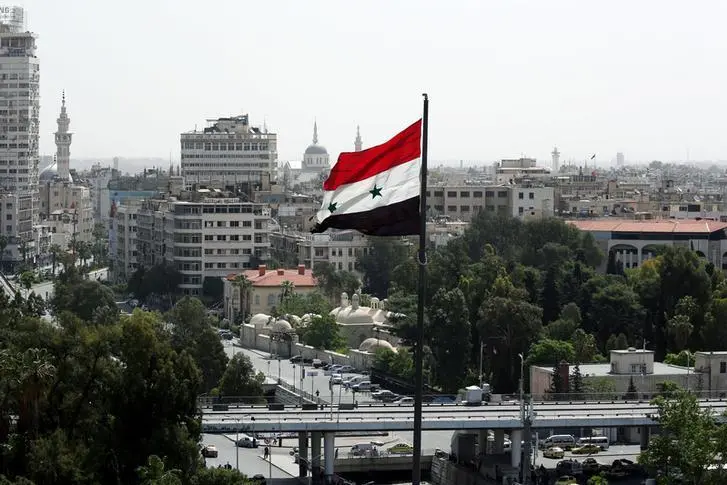PHOTO
Imagine waking up to a Mena region without its “forever wars.” What would it look like? It would mean more food, few drones, and fewer guns in Yemen. A tranquil calm on the streets of Damascus and, hopefully, no cholera outbreak in Syria would be the outcome. It would also mean military factions marching not to capture Libya’s capital but to maintain peace. Worth imagining, too, is a fully functioning Lebanese economy, thriving tourism in Egypt and Jordan, and a peaceful Iran at peace with its neighbours.
Let us cast this euphoric net even wider. Imagine Palestinians and Israelis magically becoming partners in peace following decades of exhausting animosity. No more coups, eliminating terror outfits leading to thriving agriculture will help further afield in Sudan and several other African countries. Less corruption and a stable government in Iraq will surely help its embattled people get back on their feet. A broad consensus over political participation will benefit Tunisians more than ever.
Peace is the common strand at the root of all these wishful projections. It is the fulcrum on which the region’s fortunes can swing decisively. The logic applies worldwide but is perhaps needed the most in this part of the world. However, it is easier said than done, for sure. As long as conflict-related risks and uncertainties remain, sustained growth will be a distant dream.
Things are probably moving in this direction already; who knows, 2023 could be the year they fructify. Statisticians put numbers on the peace dividend, but conflicting parties and other stakeholders must evaluate the cost of war and weigh it alongside the fruits of peace. For the rest of us, even the idea of such a possibility raises hopes of a better future for the millions plagued by conflict in the region. Try imagining the gains from all these scenarios, and we are bound to paint an unbelievable picture.
The Middle East remains one of the world’s most violent regions. At least 233,000 have died in Yemen’s civil war since 2015, causing one of the world’s worst humanitarian crises. UN Human Rights Office estimates that the conflict in Syria took 306,887 lives between 2011 and 2021. Over 17 million Syrians still require humanitarian assistance. As 217,000 Libyans are internally displaced, and approximately 1.3 million need humanitarian assistance, hundreds from the country still embark on the dangerous boat journey to Europe.
According to the International Federation of Red Cross and Red Crescent Societies, the needs of Mena’s affected populations are increasing in severity and scale. It is “aggravated by macroeconomic decline, chronic underdevelopment, climate change, natural disasters, and diseases. According to the report, “conflict woes combine with economic collapse” in some cases and soaring food and fuel prices in others.
UN-OCHA 2022 report estimates that over 55 million people across the region need humanitarian assistance, including more than 12 million displaced internally. The report also highlights that food insecurity and nutrition continue to worsen in the region, with millions of people in Lebanon, Syria, and Yemen on “the brink of hunger” and resorting to “negative coping mechanisms.” Studies even suggest famine-like conditions in parts of these countries.
Preceding US President Joe Biden’s visit to Saudi Arabia, the Tony Blair Institute for Global Change released an interesting study titled Inside the Modernization of the New Middle East. Its segment, the View from the Street in the New Middle East, had an engaging “a tale of two regions” argument. “It [the region] remains afflicted by decades of war and conflict that left nearly 35,000 dead between 2016 and 2020 alone… However, there is another story unfolding that is often missed by conventional narratives fixated on these challenges,” said the report.
This study, backed by a Zogby Research Services poll, claimed that people in the Middle East are moving on from old prejudices and perspectives as governments take transformative steps to respond to progressive values and pragmatic change. “Despite continuing instability in many parts of the region, governments are modernising with the widespread support of their people,” it said. These certainly are green shoots in the desert.
Evidence suggests that the region’s leaders are increasingly trying to mediate and resolve the region’s political conflicts instead of turning to international actors. Indeed, the quest for enduring peace must come from within, not in the form of an internationally-brokered ceasefire influenced by geopolitics. They are also taking firm steps toward transitioning into innovative and entrepreneurial economies. They have their tasks cut out, in any case. Peace would be the first dividend countries in the region would need while transforming into startup nations, innovative economies, and whatnot. Let us hope the transformation begins to take shape in 2023.
- Ehtesham Shahid is an editor and researcher based in the UAE
Copyright © 2022 Khaleej Times. All Rights Reserved. Provided by SyndiGate Media Inc. (Syndigate.info).





















